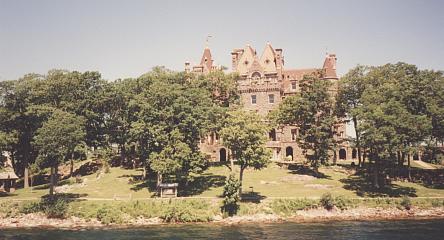
One of the popular attractions in the Thousand Islands is Boldt Castle, built by George and Louise Boldt at the beginning of the 20th century. Construction of the home ceased on the death of Louise, and it fell into a sad state of disrepair. More recently, the house has undergone repairs and further work to complete the construction.
People can visit the island by boat. Most Thousand Islands boat tours stop at the island. Since the island is on the United States side of the border, visitors on Canadian boat tours must have valid documentation, such as valid passport or visa, when visiting the island.
George Boldt
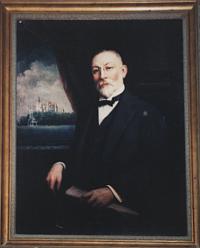
George Boldt was born April 25, 1851, in Prussia. (Some sources state he was born in Damgarten on the island of Rügen, but actually, Damgarten is a good 50km west of the island.) When George was 13, he left Germany for the New World. He first worked in restaurants and hotels in New York City, but later left to take up farming in Texas. Unfortunately, farming turned out to be a disaster for him, and in 1871 he made his way back north.
After working in New York for a while, he moved to Philadelphia where he met Louise Kehrer. He was smitten by her immediately. When she reached the age of 15, the two married on June 14, 1877. They had two children, George Charles Jr. born 1879 and Louise “Clover”, born 1883.
George became more and more successful in the hotel business, eventually managing several hotels, including the Waldorf-Astoria in New York City and the Bellevue-Stratford in Philadelphia, that catered almost exclusively to members of the upper crust of society. In fact, he purposely raised the prices at his establishments to ensure the exclusivity of his clientele.
George Boldt died December 5, 1916, in New York City.
The Castle
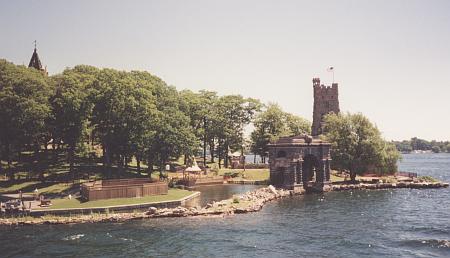
Peristyle and Alster Tower. The tower was likely named after the lake in Hamburg.
At the time, the Thousand Islands was a popular summer retreat for the wealthy of New York and Philadelphia. In 1895, Louise Boldt purchased Hart Island in the Thousand Islands. The Boldt’s made a number of changes to the island. They reshaped the island into a heart shape, and renamed it Heart Island. Their summer home on the island was one of the largest and most beautiful in the area.
But having the largest and most beautiful home in the region wasn’t good enough, and their home was demolished in 1900 to make way for something more grandiose. Their new summer home was to be an immense four story structure with 127 rooms, including 30 bathrooms. Construction proceeded using steel and concrete, with an exterior of light granite quarried 16km away on Oak Island. The overall appearance was that of a French chateau.
However, when Louise died on January 7, 1904, George gave the order to the workers to halt all construction work. The popular story is that George halted construction because he was so grief stricken over the loss of his beloved. However, historian Paul Malo offers a different viewpoint in his book “Boldt Castle: In Search of the Lost Story”. Malo points out that the castle was primarily Louise’s project, and that George took over as costs spiraled out of control. When Louise died, George halted construction not so much from grief, but simply because he could no longer afford to continue.
(The story that George halted construction when Louise ran off with their chauffeur is almost certainly aprocryphal.)
“Are You Related?”
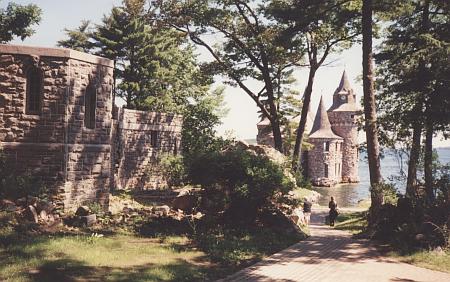
View towards the power house at the east end of the island.
Occasionally, I get asked the question: “Are you related to the guy who built that castle?”. And the answer is that I just don’t know. Normally, the chances are slight that any two people with the same surname are related. But an old family story suggests that there might possibly be a connection.
As the story goes, when my ancester Heinrich Boldt was a child, probably in the late 1870’s, a wealthy American relative visited the Boldt home in Hindenberg. The wealthy visitor wanted to give Heinrich’s father, Johann, a substantial sum of money. An argument ensued between Johann and the visitor. The visitor angrily slammed down the money on the table, and left the house. Johann then threw the money out the door after him. He then told the children not to touch the money, which blew around the yard for weeks.
Was this wealthy visitor George Boldt? We know that George did return to Germany on a number of occasions. But if this really was him, the incident would probably raise even more questions. For instance, this would have been at a time before George was really wealthy enough to throw away money at unappreciative distant relatives.
Sure, it would be interesting to know the answer to this question. But on the other hand, I’m not sure if I really want to know. I do know that I am related to a couple of famous people, Hendrik Lorentz and Heike Kamerlingh-Onnes. Discovering these particular relationships meant a lot to me since these men were famous for being great physicists and for earning Nobel Prizes. George is famous simply for amassing a lot of money, at a time when one could really get stinkin’ rich from insider connections, and squandering much of it on an unfinished mansion.
After more research into my German ancestors, it seems less likely that there is a connection. And it turns out that there’s a more likely candidate for the wealthy American relative. Note that for Europeans, “America” generally means North America, and not just the United States. I know of one relative who immigrated to Canada in the mid 1800’s, and his son may have returned for a visit.
A Zane Grey Reference?
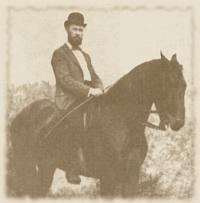
Finally, consider the popular fiction writer Zane Grey. Grey often based his novels about the old west on real life people and their stories. In his novel ![]() Lone Star Ranger (first published 1915) about the Texas Rangers in the 1870’s, one of the outlaws is named Boldt. Here’s a short excerpt from Chapter 22. (Emphasis added.)
Lone Star Ranger (first published 1915) about the Texas Rangers in the 1870’s, one of the outlaws is named Boldt. Here’s a short excerpt from Chapter 22. (Emphasis added.)
The outlaws were waiting for supper. Their conversation might have been that of cowboys in camp, ranchers at a roundup. Duane listened with eager ears, waiting for the business talk that he felt would come. All the time he watched with the eyes of a wolf upon its quarry. Blossom Kane was the lean-limbed messenger who had so angered Fletcher. Boldt was a giant in stature, dark, bearded, silent. …
I know this is likely little more than idle speculation, but did Zane Grey know something about George Boldt’s life in Texas that no one else knew?
